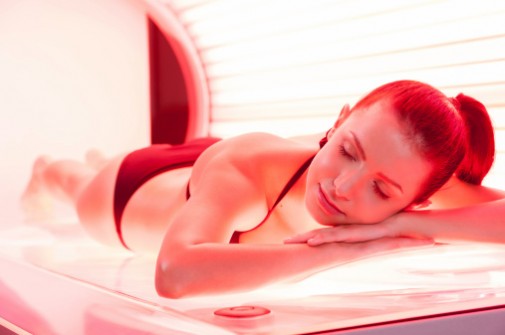Burned or not, you’re still at risk

Recent reports say that the risk for skin cancer increases if you have experienced a sun burn in your past. While this may be true, experts warn that we still need to be on alert that sunburned or not we still have risks for skin cancer.
A study conducted by The National Cancer Institute warns of evidence that indoor tanning is a risk factor for melanoma even among people who reported never experiencing burns from indoor tanning or outdoor sun exposure.
Artificial ultraviolet (UV) radiation exposure by indoor tanning was also recently confirmed to be a human carcinogen by the International Agency for Research on Cancer.
Many who opt for indoor tanning say they do so in order to avoid sunburn from an outdoor exposure.
“While tanning bed patrons may avoid sunburn, they are still at risk to develop skin cancer due to the deleterious effects of UV-A radiation that is being emitted by tanning beds,” says Dr. Shaily Kesani, a dermatologist on staff at Advocate South Suburban Hospital in Hazel Crest, Ill.
Factors putting you at risk are the amount of exposure to sunlight and/or your sensitivity to sunlight. “Exposure to sunlight, be it indoors or outdoors, puts you at risk for skin cancer,” Dr. Kesani says.
While many can regulate our amount of sun exposure, some have a harder time. For those who work outside most of the time regulating exposure can be difficult.
The Skin Cancer Foundation and Dr. Kesani offer the following tips for outdoor workers:
- Outside jobs can sometimes be done inside or moved to a shady location.
- Reorganize the job so tasks requiring outdoor work get done in the morning before 10 am and after 4 pm, to avoid the hours of greatest sun intensity.
- Wear protective clothing and cover the skin. Avoid clothes that you can see light through. If light is getting through, the ultraviolet radiation is getting through as well.
- Wear a hat and sunglasses
- Use an SPF 30 or higher sunscreen before going outdoors. Look for sunscreens with broad spectrum coverage with both UV-A and UV-B protection. Reapply sunscreen every two hours. Even when labels suggest that sunscreens are “water-proof” and “sweat-proof”, they still need to be reapplied.
- Most of us use less than the recommended amount of sunscreen in our daily routine. The appropriate amount necessary to achieve the SPF listed on the label is 1 ounce of sunscreen.
Dr. Kesani reminds us that the sun can be fun but to always take precautions while outside.
Related Posts
Comments
3 Comments
About the Author
health enews staff is a group of experienced writers from our Advocate Health Care and Aurora Health Care sites, which also includes freelance or intern writers.


















I’ve changed to getting spray tans, its a great alternative to indoor tanning and most of the time I end up looking more tan with a spray anyways!
I have always been pale and never have tanned. I think as I get older I learn more and more I just need to apply that SPF and avoid getting burned at all costs. I also opt for spray tans like Sandi above!
I really need to be better at remembering to put sun screen on. I agree stay away from the tanning beds!